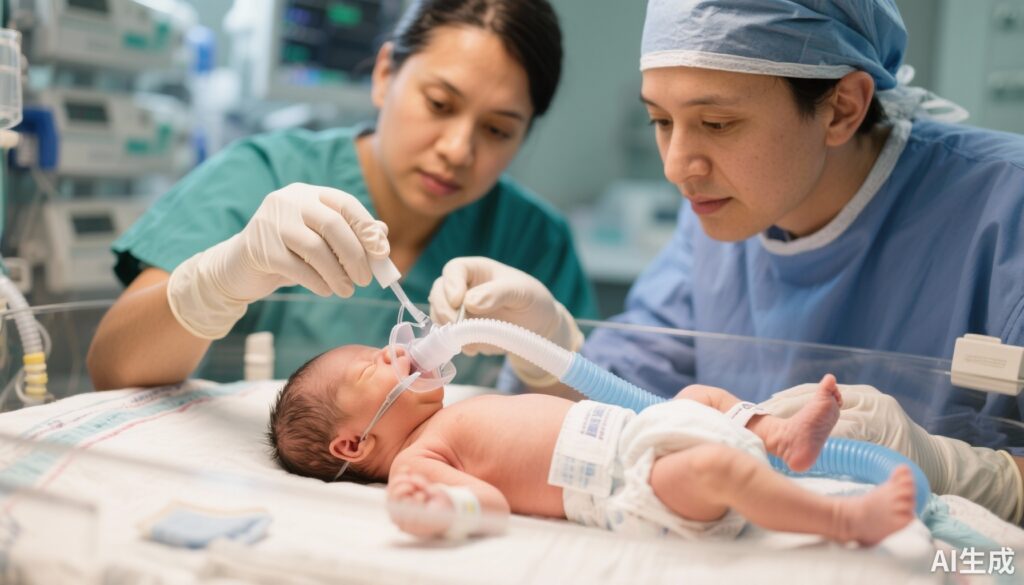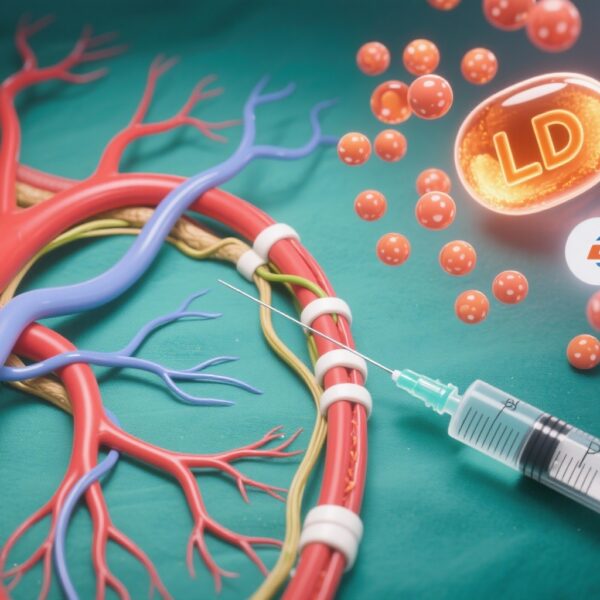Study Background and Clinical Context
Very preterm infants, defined as those born before 32 weeks’ gestation, represent a highly vulnerable population often requiring immediate respiratory support after birth. Despite more than 85% of these infants initiating spontaneous breathing within the first minute, over 60% receive positive pressure ventilation (PPV) due to respiratory distress or insufficient effort. Traditional initial respiratory support often utilizes face mask continuous positive airway pressure (fCPAP). However, face mask application shortly after birth can provoke a trigeminal nerve reflex, potentially causing vocal cord closure and hypoxia, thereby complicating effective ventilation.
Given these concerns, recent research has explored alternative interfaces for CPAP delivery at birth. Nasal mask CPAP (nCPAP) has emerged as a possible superior method, hypothesized to provide more consistent airway patency by reducing the trigeminal reflex and consequent airway obstruction. This study by Blank et al., published in Lancet Child & Adolescent Health, investigates the comparative efficacy and safety of nCPAP versus fCPAP for initial respiratory support in extremely and very preterm infants.
Study Design
The FONDUE trial was a prospective, open-label, single-center, randomized controlled trial conducted at Monash Medical Centre (Melbourne, Australia) between December 2020 and March 2023. The study enrolled 151 very preterm infants (gestational age 23w0d to 31w6d) without significant congenital anomalies. Randomization occurred immediately before birth in a 1:1 ratio to receive either nCPAP or fCPAP as initial respiratory support. The randomization sequence was stratified by gestational age groups (23w0d–27w6d and 28w0d–31w6d).
Due to practical constraints, clinicians and investigators were aware of the assigned intervention; however, the statistician analyzing outcomes was blinded to group allocation. The primary endpoint was CPAP success, defined as sufficiency of CPAP therapy alone to maintain adequate respiration, without the need to escalate to positive pressure ventilation or intubation prior to neonatal unit admission. Secondary outcomes included mortality, incidence of pneumothorax, intraventricular hemorrhage (IVH), periventricular leukomalacia (PVL), necrotizing enterocolitis (NEC), sepsis, and retinopathy of prematurity (ROP).
Key Findings
Among the 151 enrolled infants, 74 were assigned to nCPAP and 77 to fCPAP. Baseline characteristics were balanced with a mean gestational age of 28 weeks and 6 days and an average birth weight of 1155 grams. Female infants constituted 54% of the cohort, and one third were born before 28 weeks’ gestation.
The trial found a significant improvement in CPAP success rates favoring nCPAP: 58% (43/74) of infants avoided escalation to PPV compared with 39% (30/77) in the fCPAP group (Risk Ratio 1.49, 95% CI 1.06–2.10). This represents a clinically meaningful 49% relative increase in effective initial respiratory support with nCPAP.
Safety profiles were comparable, with mortality occurring in two infants per group. Notably, pneumothorax was observed only in the fCPAP group (4%), and fewer cases of intraventricular hemorrhage were noted in the nCPAP group (26% versus 34%). Rates of PVL, NEC requiring surgery, and sepsis were similar between groups. However, a slightly higher incidence of ROP requiring treatment was recorded in the nCPAP group (9% vs 3%), a finding that warrants further investigation.
Expert Commentary
The trigeminal nerve reflex-mediated inhibition of spontaneous breathing during face mask application is a plausible mechanistic explanation for the improved outcomes with nasal mask CPAP. Nasal mask interfaces may provide a more stable airway with less obstruction, enabling better maintenance of functional residual capacity and more efficient gas exchange at birth.
This study aligns with prior observational evidence suggesting nasal interfaces improve respiratory outcomes in preterm infants. The randomized design strengthens the evidence base, though the single-center nature and open-label design limit generalizability. The slightly increased ROP treatment rates in the nCPAP group may reflect differences in oxygen exposure or other confounders and merit cautious interpretation.
Further multicenter trials and mechanistic studies are needed to validate these findings, explore long-term neurodevelopmental outcomes, and optimize interface selection and respiratory strategies tailored to gestational age and clinical status.
Conclusion
The FONDUE trial provides compelling evidence that initial respiratory support using nasal mask CPAP in very preterm infants increases the likelihood of CPAP success and reduces the need for escalation to positive pressure ventilation at birth. This approach potentially minimizes ventilator-associated lung injury and supports gentler respiratory management during the critical transition from fetal to neonatal life.
Given the favorable safety profile and improved respiratory outcomes, nasal mask CPAP should be considered a valuable alternative to conventional face mask CPAP for the initial stabilization of very preterm infants. Adoption of this technique could enhance clinical protocols to improve respiratory outcomes and reduce invasive interventions in this vulnerable population.
References
Blank DA, Zhou L, Malhotra A, et al. Face mask versus nasal mask device use for initial resuscitation in extremely and very preterm infants (FONDUE): an open-label, single-centre, randomised, controlled trial. Lancet Child Adolesc Health. 2025 Oct;9(10):715-723. doi: 10.1016/S2352-4642(25)00193-2. PMID: 40908053.
Davis PG, Morley CJ, Owen LS. Immediate respiratory management of newborn infants. Semin Fetal Neonatal Med. 2021;26(6):101273. doi:10.1016/j.siny.2021.101273
Sweet DG et al. European Consensus Guidelines on the Management of Respiratory Distress Syndrome – 2022 Update. Neonatology. 2022;119(4):507-517. doi:10.1159/000521597



